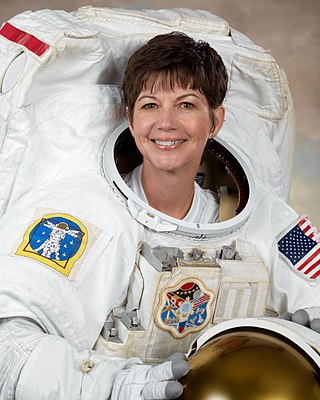
Catherine Grace "Cady" Coleman is an American chemist, engineer, former United States Air Force colonel, and retired NASA astronaut. She is a veteran of two Space Shuttle missions, and departed the International Space Station on May 23, 2011, as a crew member of Expedition 27 after logging 159 days in space.
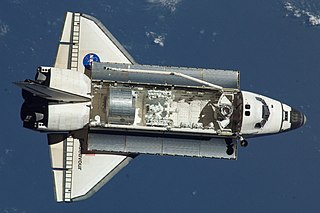
Space Shuttle Endeavour is a retired orbiter from NASA's Space Shuttle program and the fifth and final operational Shuttle built. It embarked on its first mission, STS-49, in May 1992 and its 25th and final mission, STS-134, in May 2011. STS-134 was expected to be the final mission of the Space Shuttle program, but with the authorization of STS-135 by the United States Congress, Atlantis became the last shuttle to fly.

Sharon Christa McAuliffe was an American teacher and astronaut from Concord, New Hampshire who died on the Space Shuttle Challenger on mission STS-51-L, where she was serving as a payload specialist.
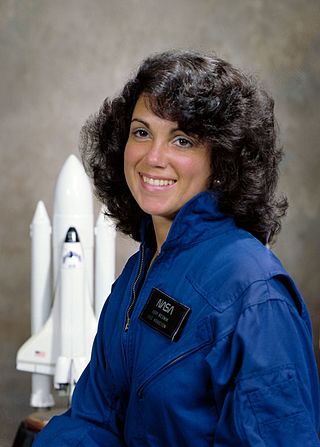
Judith Arlene Resnik was an American electrical engineer, software engineer, biomedical engineer, pilot and NASA astronaut who died in the Space Shuttle Challenger disaster. She was the fourth woman, the second American woman and the first Jewish woman of any nationality to fly in space, logging 145 hours in orbit.

On January 28, 1986, the Space Shuttle Challenger broke apart 73 seconds into its flight, killing all seven crew members aboard. The spacecraft disintegrated 46,000 feet (14 km) above the Atlantic Ocean, off the coast of Cape Canaveral, Florida, at 11:39 a.m. EST. It was the first fatal accident involving an American spacecraft while in flight.

The Teacher in Space Project (TISP) was a NASA program announced by Ronald Reagan in 1984 designed to inspire students, honor teachers, and spur interest in mathematics, science, and space exploration. The project would carry teachers into space as Payload Specialists, who would return to their classrooms to share the experience with their students.
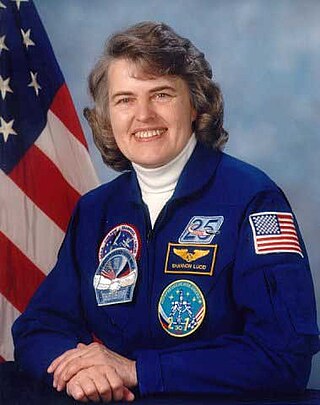
Shannon Matilda Wells Lucid is an American biochemist and retired NASA astronaut. She has flown in space five times, including a prolonged mission aboard the Russian space station Mir in 1996, and is the only American woman to have stayed on Mir. From 1996 to 2007, Lucid held the record for the longest duration spent in space by an American and by a woman. She was awarded the Congressional Space Medal of Honor in December 1996, making her the tenth person and the first woman to be accorded the honor.

Dafydd Rhys "David" Williams is a Canadian physician, public speaker, author and retired CSA astronaut. Williams was a mission specialist on two Space Shuttle missions. His first spaceflight, STS-90 in 1998, was a 16-day mission aboard Space Shuttle Columbia dedicated to neuroscience research. His second flight, STS-118 in August 2007, was flown by Space Shuttle Endeavour to the International Space Station. During that mission he performed three spacewalks, becoming the third Canadian to perform a spacewalk and setting a Canadian record for total number of spacewalks. These spacewalks combined for a total duration of 17 hours and 47 minutes.

Robert Joseph "Bob" Cenker is an American aerospace and electrical engineer, aerospace systems consultant, and former astronaut. Cenker worked for 18 years at RCA Astro-Electronics, and its successor company GE Astro Space, on a variety of spacecraft projects. He spent most of his career working on commercial communications satellites, including the Satcom, Spacenet and GStar programs.
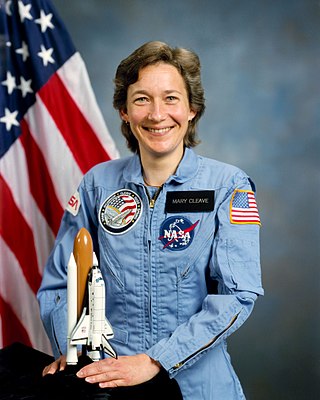
Mary Louise Cleave was an American engineer and NASA astronaut. She also served from 2005 to 2007 as NASA Associate Administrator for the Science Mission Directorate.

Don Leslie Lind was an American scientist, naval officer, aviator, and NASA astronaut. He graduated from the University of Utah with an undergraduate degree in physics in 1953. Following his military service obligation, he earned a PhD in high-energy nuclear physics from the University of California, Berkeley in 1964.
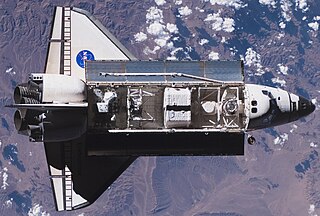
STS-118 was a Space Shuttle mission to the International Space Station (ISS) flown by the orbiter Endeavour. STS-118 lifted off on August 8, 2007, from launch pad 39A at Kennedy Space Center (KSC), Florida and landed at the Shuttle Landing Facility at KSC on August 21, 2007.

Lisa Marie Nowak is an American aeronautical engineer and former NASA astronaut and United States Navy officer. Nowak served as naval flight officer and test pilot in the Navy, and was selected by NASA for NASA Astronaut Group 16 in 1996, qualifying as a mission specialist in robotics. She flew in space aboard Space ShuttleDiscovery during the STS-121 mission in July 2006, when she was responsible for operating the robotic arms of the shuttle and the International Space Station. In 2007, Nowak was involved in a highly publicized incident of criminal misconduct for which she eventually pled guilty to felony burglary and misdemeanor battery charges, resulting in her demotion from captain to commander, and termination by NASA and the Navy.

Stephanie Diana Wilson is an American engineer and a NASA astronaut. She flew to space onboard three Space Shuttle missions, and is the second African American woman to go into space, after Mae Jemison. As of 2022, her 42 days in space are the second most of any female African American astronaut, having been surpassed by Jessica Watkins in 2022, however in 2024 she was assigned to the Crew-9 mission during which she should retake the lead.

STS-51-L was the disastrous 25th mission of NASA's Space Shuttle program and the final flight of Space Shuttle Challenger.

A payload specialist (PS) was an individual selected and trained by commercial or research organizations for flights of a specific payload on a NASA Space Shuttle mission. People assigned as payload specialists included individuals selected by the research community, a company or consortium flying a commercial payload aboard the spacecraft, and non-NASA astronauts designated by international partners.

Benjamin Alvin Drew is a United States Air Force officer and a former NASA astronaut. He has been on two spaceflights; the first was the Space Shuttle mission STS-118 to the International Space Station, in August 2007. Drew's second spaceflight took place in March 2011 on STS-133, another mission to the International Space Station. STS-133 was Space Shuttle Discovery's final mission. Drew took part in two spacewalks while docked to the station. Drew was the final African-American to fly on board a Space Shuttle, as the final two Space Shuttle missions, STS-134 and STS-135, had no African-American crew members.
The Educator Astronaut Project is a NASA program to educate students and spur excitement in science, technology, engineering, math, and space exploration. It is a successor to the Teacher in Space Project of the 1980s, which NASA cancelled after the death of teacher-astronaut Christa McAuliffe in the Space Shuttle Challenger disaster (STS-51-L) amid concerns about the risk of sending civilians into space.
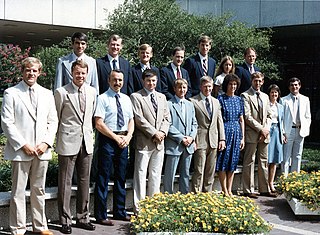
NASA Astronaut Group 10 was a group of 17 astronauts that were announced on May 23, 1984 and consisted of seven pilots and ten mission specialists. Although selected in 1984, no member of the group would fly until 1988 due to the Challenger disaster and the resulting grounding of the Space Shuttle fleet.



















